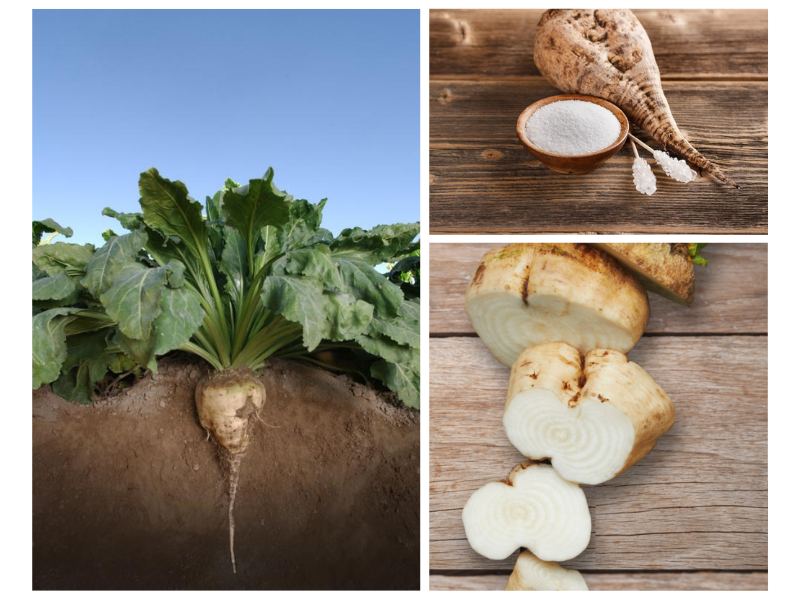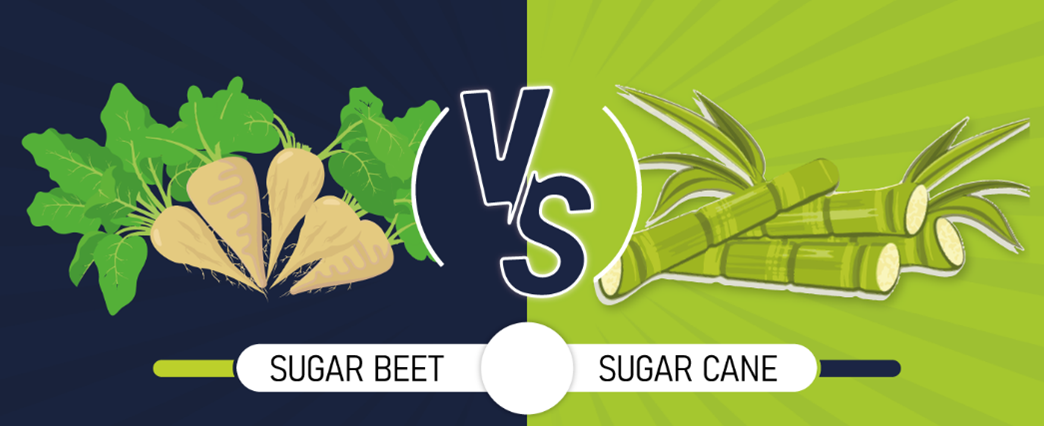Beet Sugar vs. Cane Sugar: Key Distinctions You Should Know
The distinction in between beet sugar and cane sugar expands beyond their similar chemical compositions; it includes their beginnings, manufacturing approaches, and prospective wellness implications. While both types of sugar work as common sugar, their different histories-- beet sugar arising in 19th century Europe and cane sugar tracing back to old Southeast Asia-- established the stage for a much deeper expedition of their manufacturing processes and dietary accounts. Comprehending these distinctions might affect consumer selections in a market increasingly concentrated on wellness and sustainability. What nuances might better inform your choices on these sugar?
Beginnings of Beet Sugar
Although beet sugar has become a substantial gamer in the international sugar market, its beginnings can be mapped back to the early 19th century when European researchers started checking out different resources of sugar. The zero hour happened in 1801 when German drug store Andreas Marggraf recognized sugar in the white beet, a discovery that prepared for subsequent research and commercial applications.
The process of refining beet sugar was more progressed by his pupil, Franz Karl Achard, that established the very first beet sugar manufacturing facility in Prussia in 1806. This innovation accompanied the Napoleonic Battles, during which profession disturbances caused an increased demand for domestic sugar manufacturing in Europe. beet sugar vs cane sugar. Because of this, beet sugar obtained grip, especially in countries like France and Germany

Beginnings of Cane Sugar
Cane sugar, stemmed from the sugarcane plant, has a rich history that goes back hundreds of years, mainly in exotic areas where the plant flourishes. The earliest proof of sugarcane growing can be mapped to New Guinea and Southeast Asia around 8,000 BCE. From these origins, understanding of sugarcane infect India, where it was first processed into crystallized sugar by the 5th century CE.
As trade courses developed, sugarcane got to Persia, the Mediterranean, and eventually Europe, where it was originally considered a high-end thing. The expansion of sugar production happened throughout the Islamic Golden Age, which helped with the transfer of farming strategies and innovations. By the 15th century, the demand for sugar surged, triggering European countries to develop plantations in the Caribbean and South America.
This shift not only transformed the agricultural landscape of these regions but likewise had substantial socio-economic implications, including the reliance on enslaved labor. Cane sugar, once an unusual commodity, ended up being a staple in diet plans worldwide, laying the structure for the worldwide sugar market we acknowledge today. Understanding its origins is critical for valuing cane sugar's effect on cooking practices and economies.
Production Processes
The production processes for both beet sugar and cane sugar entail numerous necessary actions that change raw products into the crystalline sweeteners generally made use of today. For beet sugar, the process begins with harvesting sugar beetss, which are then washed and sliced into slim cossettes. These cossettes are subjected to hot water removal, permitting the sugar to liquify.
On the other hand, cane sugar manufacturing starts with the harvesting of sugarcane, which is crushed to remove the juice. This juice is also detoxified utilizing lime and heat. Complying with purification, the juice is evaporated to create a syrup, which is after that taken shape. The sugar crystals are centrifuged to separate them from the staying syrup, referred to as molasses, and consequently dried. While both processes share resemblances, the resource material and particular methodologies lead to distinctive features for beet and cane sugars, influencing the preferences of producers and customers alike.
Nutritional Comparison
When comparing the dietary accounts of beet sugar and cane sugar, it is crucial to acknowledge go to this website that both sweeteners are largely made up of sucrose, leading to similar power web content and calorie worths (beet sugar vs cane sugar). Both sorts of sugar commonly contain concerning 4 calories per gram, making them comparable in regards to power arrangement
In addition to sucrose, both beet and cane sugars have trace amounts of minerals and vitamins; however, these amounts are minimal and do not dramatically contribute to day-to-day dietary demands. As an example, both might consist of minute degrees of calcium, magnesium, and potassium, yet these are not present in adequate amounts to use any considerable health and wellness benefits.
Moreover, the lack of fiber in both sorts of sugar underscores their role as pure sugar rather than sources of nutrition. beet sugar vs cane sugar. While they might supply a quick source of power, their absence of important nutrients emphasizes the importance of small amounts in usage
Inevitably, from a purely nutritional perspective, beet sugar and cane sugar are essentially equivalent, making the option between the two largely based on elements such as taste choice, accessibility, and environmental factors to consider.
Health Ramifications
While beet sugar and cane sugar share similar dietary profiles, their wellness ramifications necessitate factor to consider past mere make-up. Both sugars are mainly made up of sucrose, which can result in comparable metabolic results; too much usage can add to excessive weight, diabetic issues, and cardio illness. However, the resource and production of these sugars might influence their general health effect.
Beet sugar is typically produced utilizing controversial chemicals, such as phosphoric acid, which may leave trace deposits. In comparison, cane sugar goes through an extra standard refining procedure, which tends to be less chemical-intensive. The existence of these deposits in beet sugar could raise worries for sensitive populations or those looking for to decrease chemical direct exposure.

Furthermore, the farming techniques of sugar beetss and sugar cane might vary, with the previous typically involving more intensive farming methods that can influence dirt wellness and biodiversity. This agricultural context may affect the wider health effects of sugar usage on a population degree.
Eventually, while both beet and cane sugars serve similar duties in the diet, customers ought to think about the nuances of production and sourcing when making informed choices concerning their sugar consumption.
Verdict

While both types browse this site of sugar offer as common sweeteners, their different backgrounds-- beet sugar emerging in 19th century Europe and cane sugar tracing back to old Southeast Asia-- set the phase for a deeper expedition of their production and dietary profiles.The procedure of refining beet sugar was additional progressed by his student, Franz Karl Achard, who established the initial beet sugar factory in Prussia in 1806.The manufacturing for both beet sugar Extra resources and cane sugar entail several essential steps that transform raw products right into the crystalline sugar frequently made use of today. For beet sugar, the procedure begins with harvesting sugar beetss, which are then cleaned and sliced into thin cossettes. The removal refines further differentiate the 2, with beet sugar making use of hot water extraction and cane sugar entailing crushing.